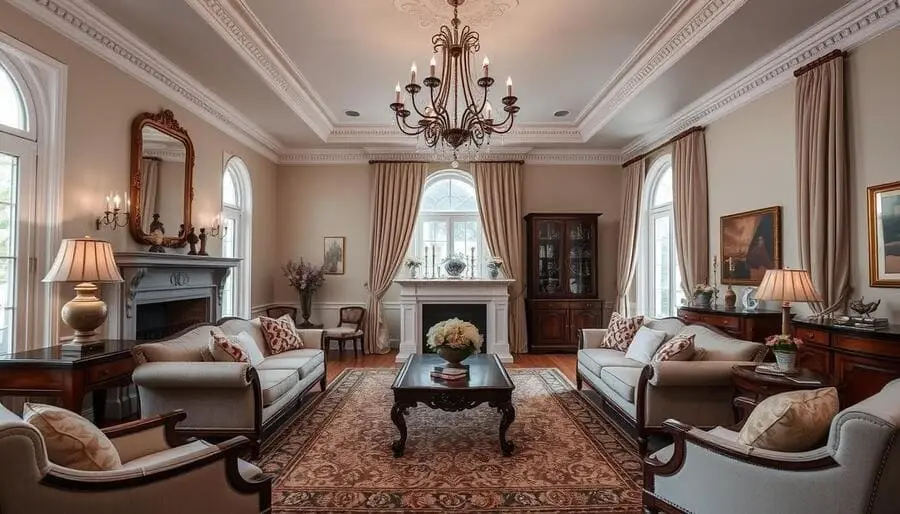A formal living room is more than just a space for entertaining guests, it’s where design meets functionality to create an inviting yet sophisticated atmosphere. Achieving the perfect balance requires thoughtful attention to every element, from furniture choices to décor accents.
Whether you’re inspired by timeless classics or leaning towards a modern twist, crafting a formal living room involves a delicate interplay of color, texture, and layout. This guide explores 25 formal living room ideas to transform your space into a haven of style and comfort, ensuring your living room radiates charm while remaining practical for daily life.
RELATED : 32 Clever White Living Room Ideas For Any Style Lover
Table of Contents
Popular Color Palettes
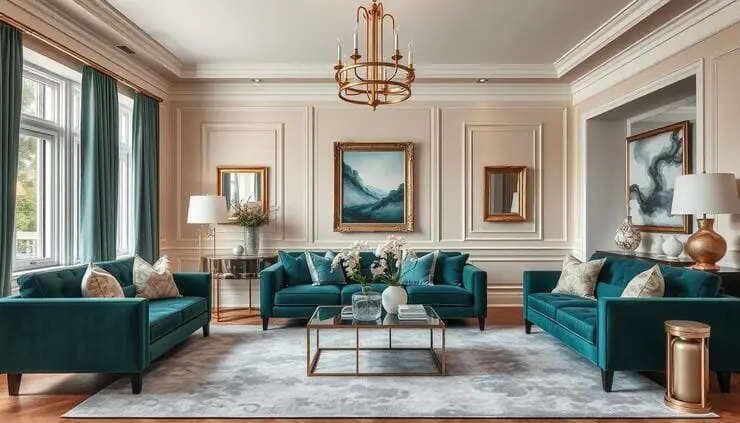
Color sets the mood of a space, and for a formal living room, the right palette can transform it into a serene yet sophisticated retreat.To embrace formal living room modern aesthetics, consider pairing neutral walls with bold accents like navy or charcoal to create visual depth. Metallic touches in gold or silver further elevate the palette, adding a touch of luxury.
The Perfect Sofa
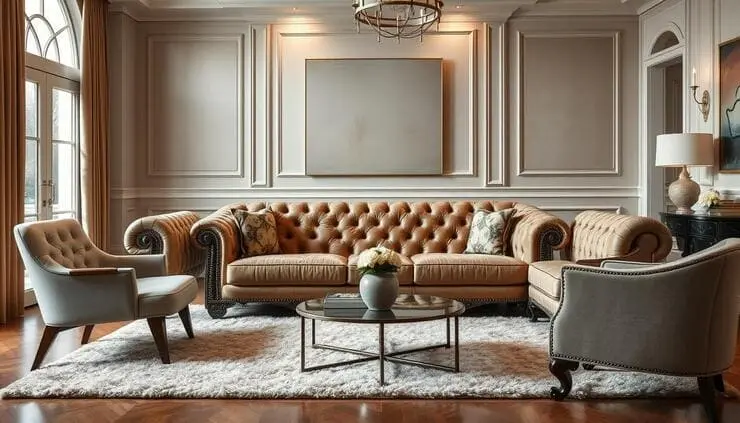
Opt for a design that combines comfort with grandeur. plush sectional sofas in rich fabrics like velvet or leather, sleek mid-century modern pieces,can become a focal point . Selecting a sofa that complements your formal living room design is crucial—classic silhouettes with elegant detailing, such as nailhead trim or carved wood accents, can anchor the room beautifully.
The Importance of Accent Chairs
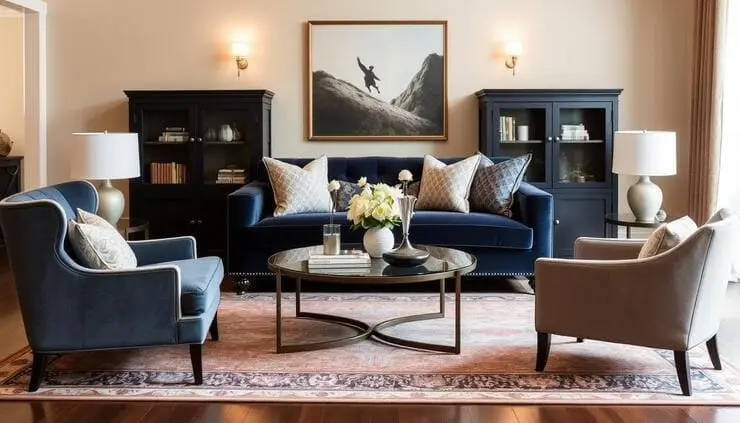
Accent chairs should complement the sofa while adding an element of contrast, either through color or design. Wingback chairs, slipper chairs, or sleek modern options can enhance the overall aesthetic. Incorporating this type of seating into your formal living room ideas allows for a curated look that balances style and comfort while providing additional seating for guests.
Incorporate Luxury Rugs
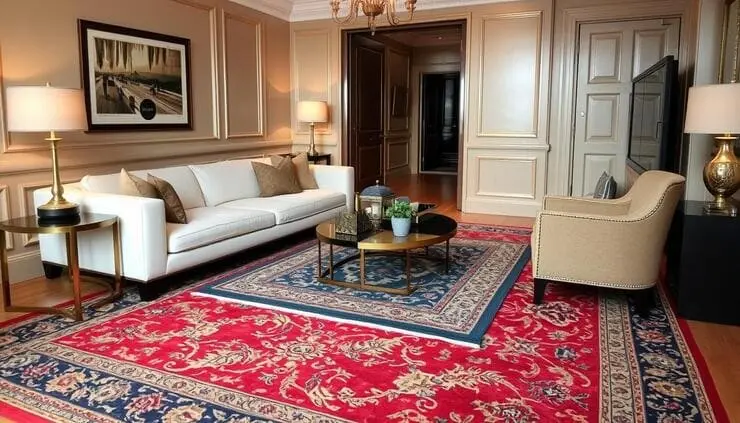
A rug in a formal living room is akin to a work of art—it ties the room together while adding warmth and texture. Persian or Oriental rugs bring a sense of tradition and opulence, while contemporary designs with geometric patterns can align with formal living room modern vibes. The key is to choose a rug that complements the color palette and scale of the room.
The Art of Layering Textures
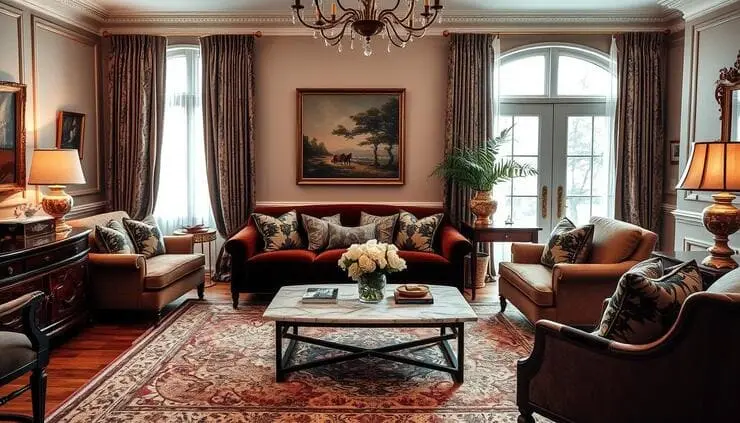
Combining materials like soft velvet, rustic wood, sleek glass, and brushed metals can create a tactile richness. Consider pairing a high-pile rug with smooth leather chairs. This interplay of surfaces not only adds depth but also aligns with sophisticated formal living room ideas, ensuring the space feels dynamic and engaging.
Home Office
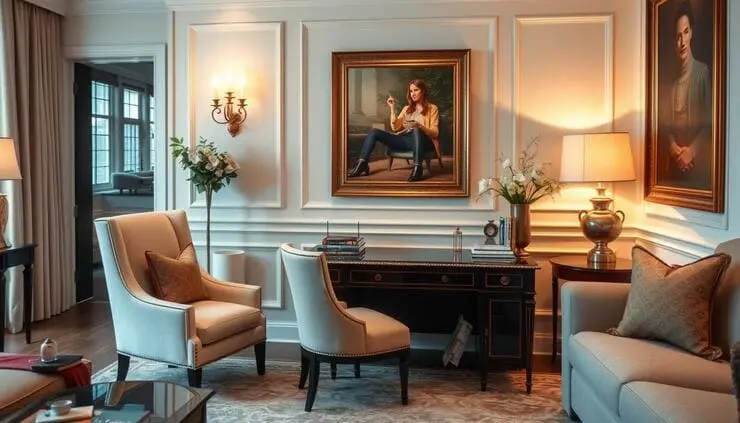
A chic writing desk paired with a refined armchair can seamlessly blend into the room’s design. Choose pieces that resonate with formal living room modern aesthetics, like streamlined desks in high-gloss finishes or those with intricate detailing, ensuring the workspace complements the overall decor.
Using Curtains and Drapes
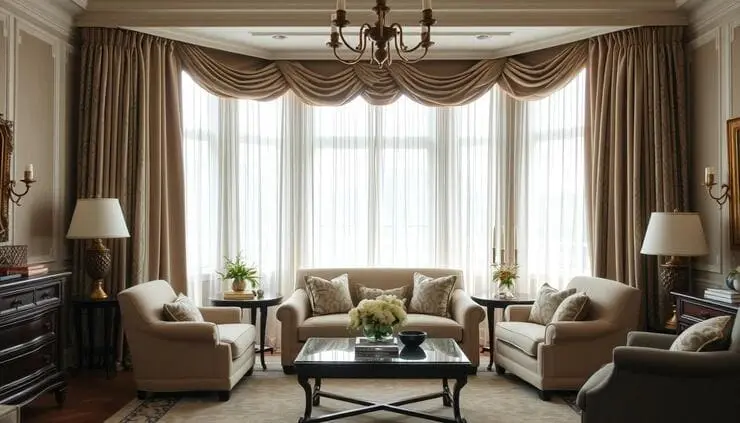
Curtains are the crowning glory of any formal living room. Opt for floor-length drapes in luxurious fabrics like silk, velvet, or linen to exude elegance. Layering sheer curtains beneath heavier drapes adds versatility, allowing you to control light while maintaining privacy. Formal living room curtains should echo the room’s color palette and style, whether through subtle patterns or bold, statement-making hues.
Classic Wall Art and Decorative Mirrors

Wall art and decorative mirrors play a pivotal role in elevating a formal living room design. Classic wall art such as oil paintings, or modern abstract pieces, can serve as conversation starters. Decorative mirrors, especially those with gilded or ornate frames, amplify natural light and create an illusion of spaciousness. A large statement mirror above a console table or a curated gallery wall featuring timeless artwork can transform blank walls into a testament to elegance.
Storage Solutions Clutter-Free
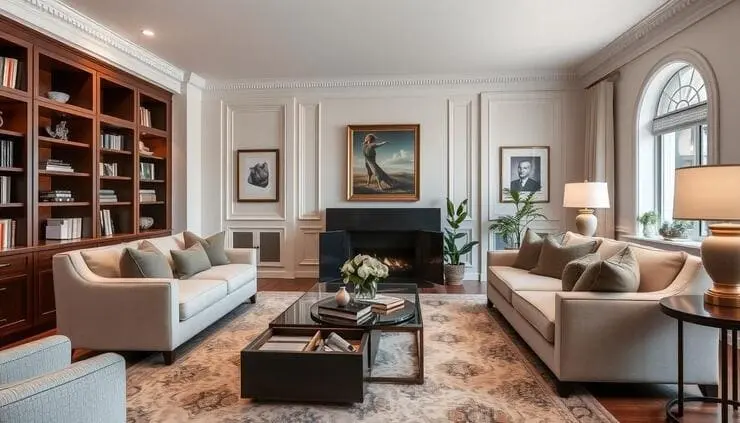
Opt for stylish solutions like built-in cabinetry, antique armoires, or sleek credenzas to conceal clutter while maintaining a polished appearance. Open shelving can showcase carefully chosen book collections or ornamental elements, giving the room personality.
How to Arrange Furniture
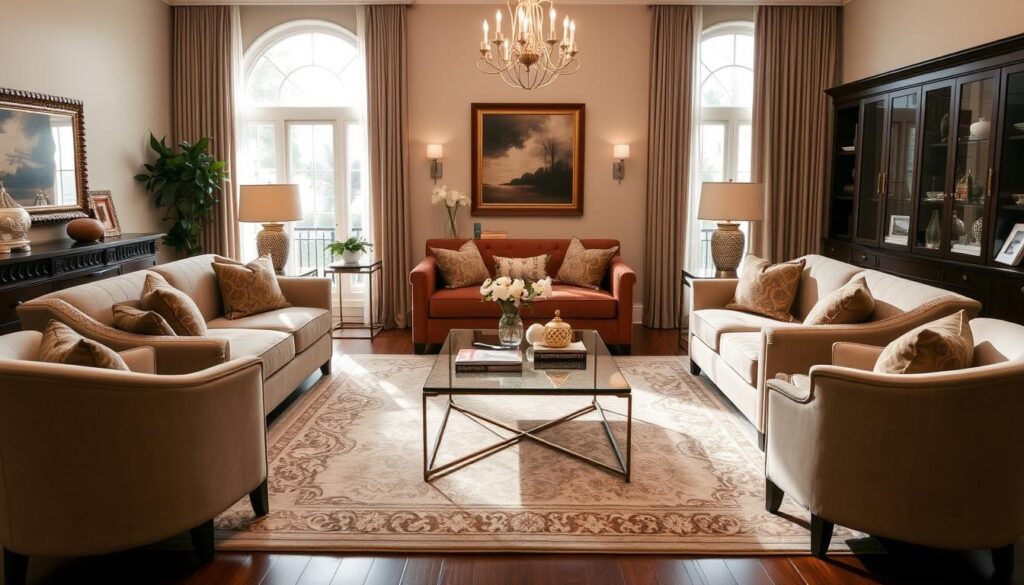
Start with a central anchor, such as a statement sofa, and arrange seating to promote interaction, ensuring no one feels isolated. Pairing chairs and sofas symmetrically can achieve a harmonious look, while strategically placed accent tables provide both utility and style.
Whether it’s a fireplace, a breathtaking view, or an artwork, think about designing the space so that it frames the main point.
Focal Point with Fireplaces or Feature Walls
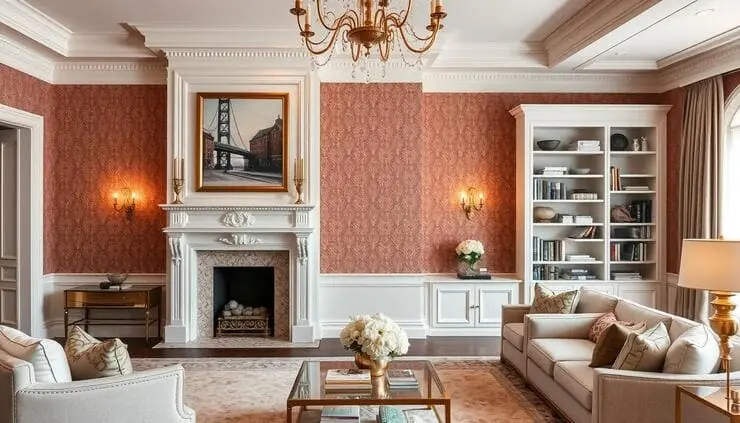
Fireplaces, with their timeless charm, naturally command attention. Dress them up with ornate mantels, decorative tiles, or striking artwork above the hearth. Alternatively, a feature wall can add drama and interest; think textured wallpaper, bold paint colors, or a floor-to-ceiling bookcase. These elements not only enhance your formal living room wall but also align with classic and modern design sensibilities, creating a centerpiece that’s both functional and beautiful.
The Impact of Floral Arrangements and Greenery
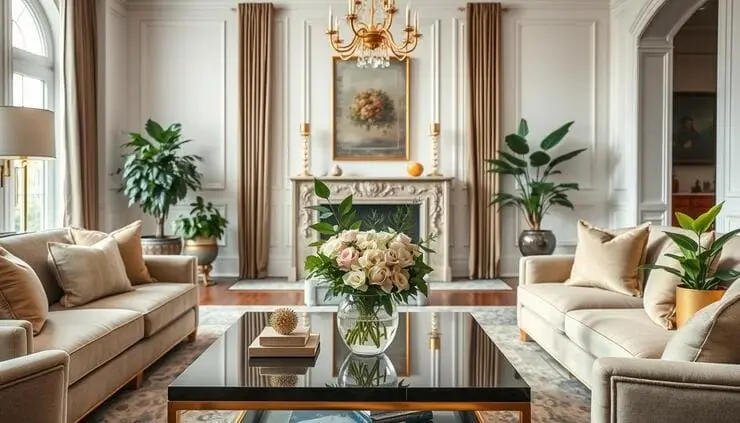
A vase of fresh roses or lilies on a coffee table creates a sophisticated ambiance, while lush greenery in decorative pots provides a grounding, organic feel. When choosing flowers and plants, take into account their positioning and size to balance the room’s dimensions.
Blending Modern and Traditional Elements
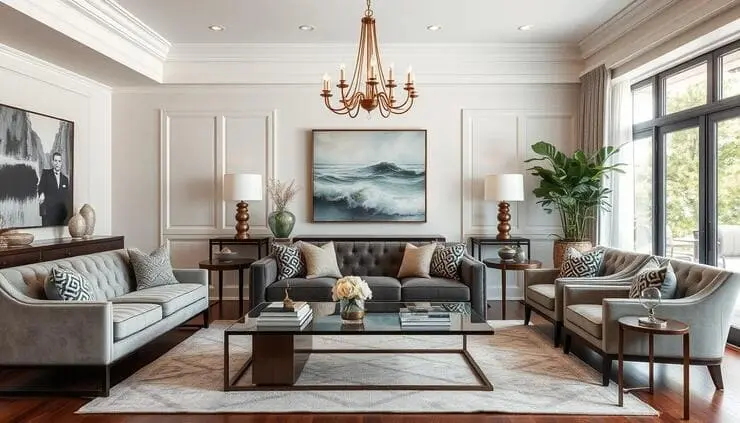
Pair a classic tufted sofa with sleek, minimalist coffee tables or juxtapose vintage chandeliers with contemporary wall art. This blending of styles adds depth and character to your formal living room design. Choose neutral tones as a unifying element, then layer in textures, patterns, and materials that span different design eras for a harmonious yet dynamic look.
The Role of Symmetry in Layouts

Matching sofas, armchairs, or side tables can be arranged in pairs to produce a sophisticated mirrored impression. Incorporate symmetrical arrangements on formal living room walls, such as twin sconces or artwork hung in pairs, to further reinforce this design principle. Symmetry not only enhances visual appeal but also fosters a calming and organized atmosphere.
Incorporating Accent Tables
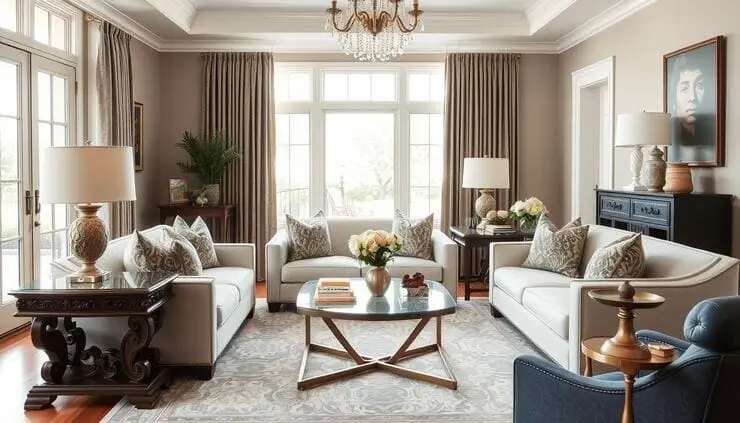
Whether it’s an intricately carved wooden side table, a sleek glass-topped piece, or a bold metallic pedestal table, these elements contribute to the room’s overall design. Place them strategically beside seating to offer convenience without disrupting the flow of the layout. Choosing tables that complement your formal living room furniture ensures they blend seamlessly while adding depth and interest to the space.
The Right Flooring to Complement the Design
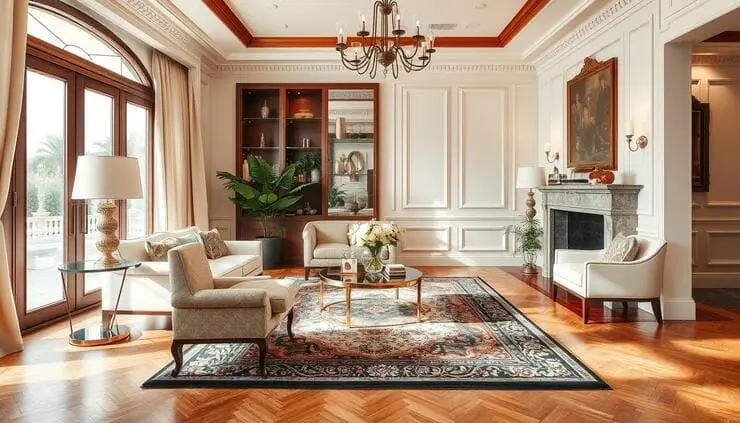
Hardwood floors are a perennial favorite, offering timeless elegance and warmth. For a softer touch, consider layering an area rug over the hardwood to define the space while adding texture and comfort.
Adding Luxurious Textiles and Fabrics
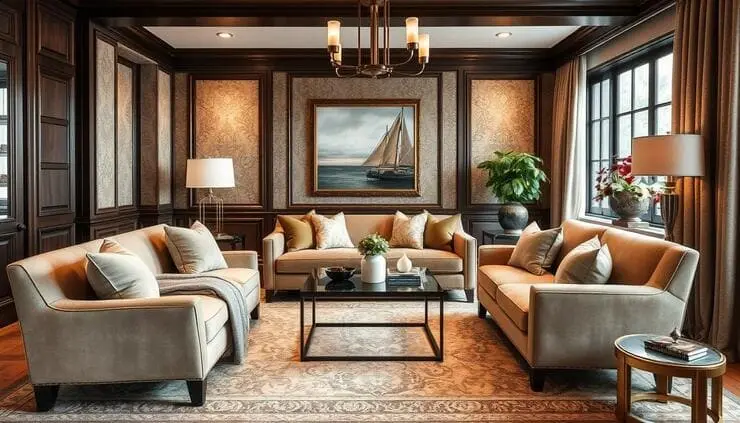
Textiles breathe life and texture into a formal living room. Incorporate plush throw pillows, velvet upholstery, and soft wool or silk rugs to create an inviting yet upscale ambiance. Draping a cashmere or chenille blanket over an armchair or sofa adds a layer of coziness. Mixing textures, such as pairing smooth leather with rich jacquard patterns, amplifies the room’s sophistication.
Lighting for Architectural Details
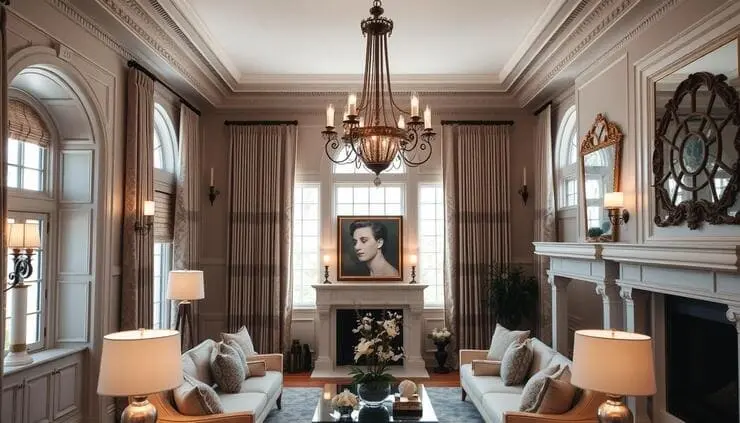
Wall sconces can draw attention to intricate moldings or wainscoting, while recessed lighting can illuminate ceiling beams or coffered designs. Chandeliers are both useful lighting fixtures and eye-catching accent pieces. Pair ambient lighting with strategically placed accent lights to highlight formal living room walls adorned with art or decorative mirrors.
Elegant Windows for a Polished Look
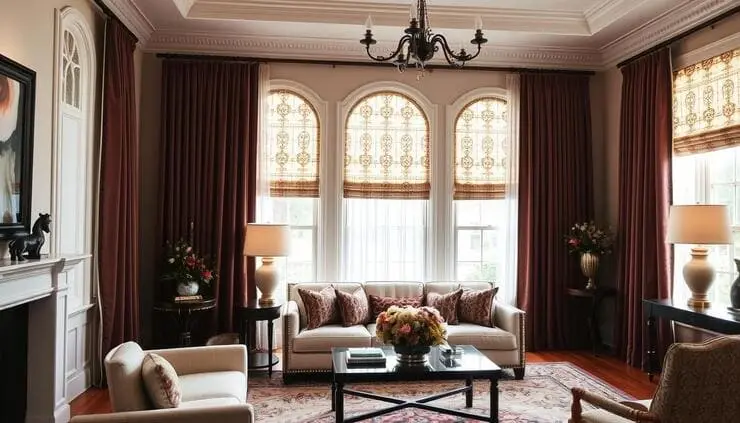
Floor-to-ceiling drapes in opulent fabrics like silk or velvet create a sense of grandeur and elongate the room’s vertical space. Pair them with sheer curtains for a layered look that provides privacy while softening natural light. Roman shades in classic patterns or rich hues can also complement a more tailored formal living room design. Decorative curtain rods and finials add the final touch of sophistication.
Vintage or Antique Pieces for Character
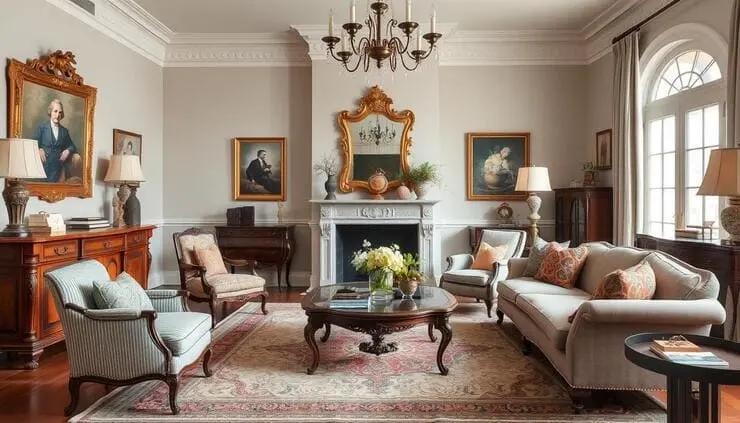
Vintage and antique items infuse a formal living room with a sense of history and charm. An ornate sideboard, a hand-carved coffee table, or a gilded mirror can become standout pieces that tell a story. These treasures not only enhance the room’s aesthetic but also add layers of authenticity. Mixing eras can lend a unique, collected-over-time appeal to the space.
Wall Décor Ideas
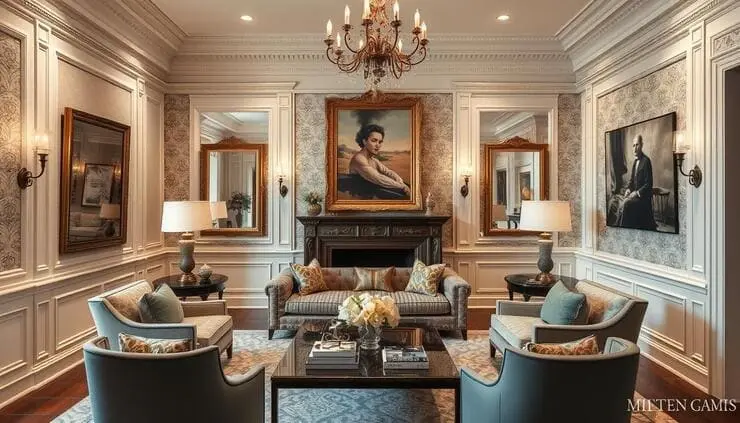
Walls in a formal living room should be anything but blank. Large-scale artwork, intricately framed mirrors, or a curated gallery wall can provide visual interest. For a classic touch, consider wainscoting or paneling that adds architectural depth. Wallpaper with subtle metallic accents or elegant patterns can also elevate formal living room walls.
Minimalist Touch
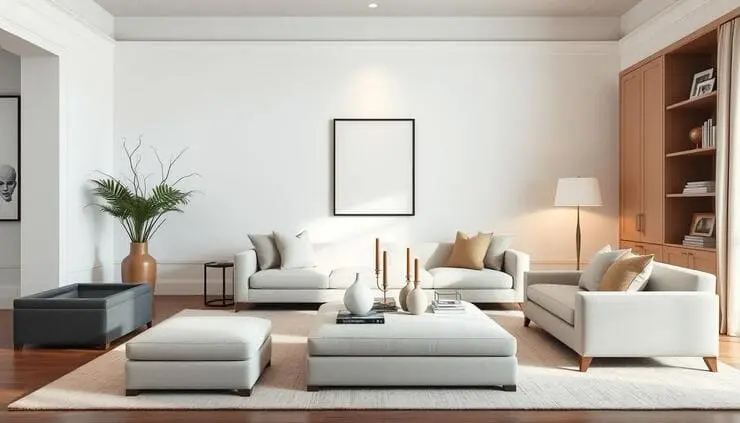
Opt for hidden storage solutions, such as ottomans with compartments or sleek cabinets, to keep everyday items out of sight. Display only a curated selection of decorative objects, such as a few well-chosen books, a sculptural vase, or a pair of candlesticks. Minimalism in a formal living room design doesn’t mean starkness—it’s about allowing each element to shine without overwhelming the space
Layered Accessories
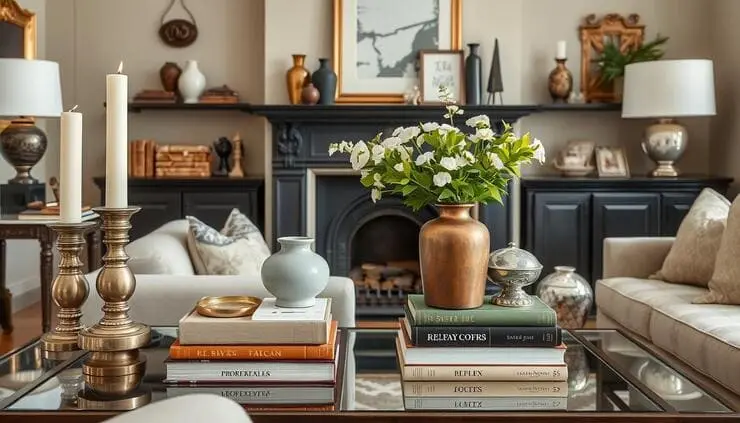
Combine varying heights, textures, and materials to create a dynamic yet cohesive arrangement. For example, group metallic candleholders with ceramic vases and a stack of leather-bound books on a side table. Layering accessories on coffee tables, shelves, and mantels aligns with sophisticated formal living room ideas, making the space feel curated and intentional.
Incorporate Seasonal Decor
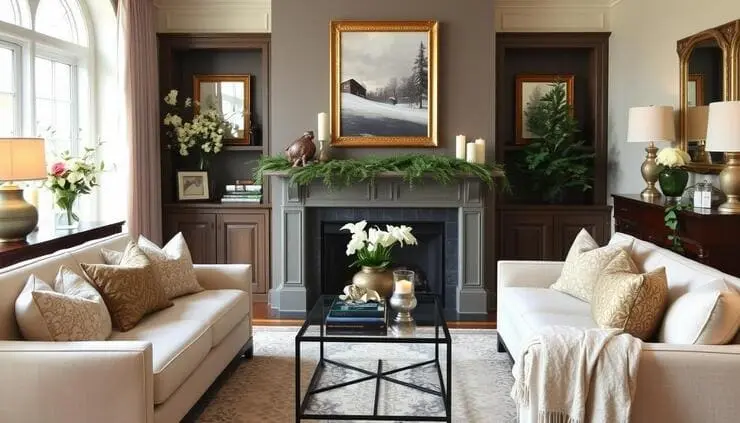
Seasonal décor in a formal living room should be subtle and harmonious with the room’s design. Swap out throw pillows or blankets for colors and textures that reflect the season. Add fresh florals in spring, warm-toned candles in fall, or evergreen garlands in winter. The key is to enhance the space without overpowering its elegant foundation.
Balancing Comfort and Elegance
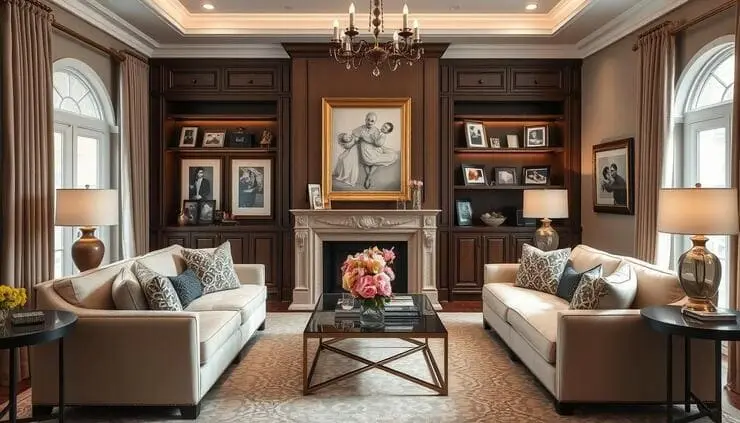
Plush seating with supportive cushions ensures relaxation. Incorporate personal touches, like family photos in sleek frames or cherished keepsakes displayed on shelves, to create warmth. By blending opulence with approachability, your formal living room design will feel as inviting as it is impressive.
Conclusion
Designing a formal living room that is both elegant and functional is an art form that merges personal style with timeless principles. From choosing the right furniture and accessories to incorporating luxurious textiles and sophisticated lighting, each detail contributes to the room’s cohesive beauty. By blending modern touches with classic elements, you can create a space that feels unique and enduring. Whether you’re hosting guests or simply enjoying a quiet evening, a well-designed formal living room will serve as a true reflection of your home’s personality and grac

